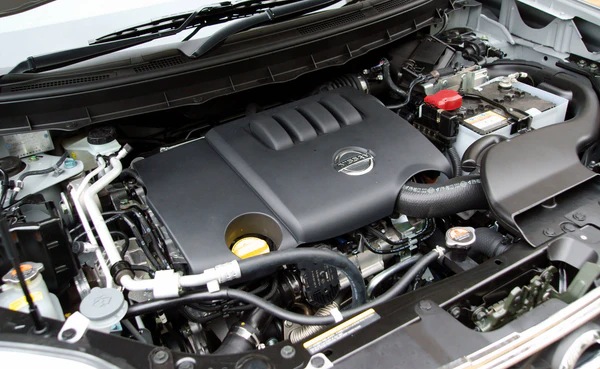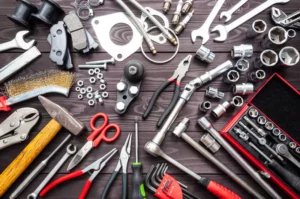Doing basic engine maintenance at home saves both money and ensures your car will run reliably. From replacing air filters, engine oil or spark plugs to improving fuel economy and performance, DIY projects such as these are an invaluable way of saving both time and money on car care costs.
Cleaning battery terminals is one of the most essential maintenance tasks you can complete on your car, as corrosion on its terminals could impact its ability to start.
Air Filter Replacement
Air filters are absolutely essential in a car’s engine. As your engine draws air in to burn its gasoline and create combustion, dust and dirt particles become drawn in from outside sources and may damage or destroy its moving parts. A good air filter, though cheap at Rockauto, serves to protect against that happening by sucking in clean fresh air instead. Eventually however, when full of grime or other obstructions it restricts engine breathing (thus power) requiring its replacement – something Rockauto offers at very competitive rates so don’t delay this important task regularly! Air filters cost very little so don’t procrastinate on this task – do this immediately if you care!
While inspecting, be sure to examine both radiator and heater hoses for signs of cracks or softness around their ends; an unrepaired leak in one could cause engine overheating and lead to early failure.
If your car has been modified with air intake, exhaust or camshaft upgrades, tuning is crucial to ensure its engine doesn’t fail prematurely and unlock the potential of those modifications (provided they were completed properly).
Not to be underestimated, engine tune-up can be more complicated than it appears and may result in costly repairs if done improperly. Therefore, it is advised that you consult the owner manual of your vehicle or contact a certified mechanic to perform this service.
Engine Oil Change
Renewing your oil regularly is essential to keeping your engine functioning smoothly, as oil serves as a protective shield between its moving parts, helping reduce wear on key components such as pistons and crankshaft. Furthermore, oil helps dissipate heat more effectively to help avoid overheating of the engine.
If the oil in your car appears dark and dirty, this indicates it’s time for an oil change and filter replacement.
Always select high-grade motor oil that meets the vehicle specifications, and enlist the assistance of staff from your local auto parts store if unsure which kind to use. After replacing the oil, recheck its level with your dipstick and top off as necessary.
Although basic tune-ups can be accomplished on your own, having a professional perform this work is always recommended. Tune-ups performed by certified mechanics will detect and address issues you would miss on your own; additionally they have access to tools and specialized equipment which can improve performance, efficiency, and longevity of the vehicle. For optimal results follow manufacturer recommendations regarding maintenance intervals; additionally ensure all required safety gear such as dust masks and rubber gloves is worn when working with fluids such as oil.
Spark Plug Replacement
Spark plugs create a brief electrical spark to ignite the mix of fuel and air in your engine’s combustion chamber, prompting piston movement that, together with crankshaft rotation, propels your car forward. Over time however, spark plugs wear out and must be replaced.
Signs that your spark plugs have worn down include hard starting; rattling or “pinging” noises caused by pistons traveling too quickly through their stroke and burning up too quickly; black soot on the plug’s insulator that indicates an issue with oxygen sensor; as well as its appearance becoming darker over time.
Modern spark plugs have become more durable and reliable over time, as well as easier to install than older models. When changing spark plugs it is still advisable to follow your owner’s manual or service repair manual carefully as procedures vary between vehicles.
Park your vehicle on a flat surface and remove any spark plug wires (if equipped). Use a spark plug socket in a counterclockwise motion to unplug it; be mindful not to apply too much force as too much force could break or crack the spark plug. After taking these steps, inspect it for signs of wear such as soot and carbon deposits on its insulator as well as ground electrode loss of its shiny appearance – this signals its time for replacement – make sure that its gap setting is correct; use either an online gap tool or owner manual resource to find out the right setting for your particular engine model.
Fuel Filter Replacement
A fuel filter removes dirt and rust particles from gasoline that’s fed to your engine, helping it run more effectively. A clogged filter restricts fuel flow, leading to engine power losses. These cheap and easy-to-change components should be regularly checked for signs of wear in their owner’s manual, with replacement taking place quickly if symptoms of dirtying appear.
As opposed to air and spark plug filters, fuel filter removal requires no engine shutdown or start up; however, you will require a catch pan or rag handy in case any spilled fuel requires cleaning up afterwards. Furthermore, having an extinguisher nearby may prove useful should your vehicle suddenly release pressure, potentially unleashing gas that can then burst from its system when released suddenly.
Before replacing a fuel filter on a vehicle, it’s necessary to depressurize its fuel system by temporarily disconnecting the fuel pump fuse or relay. After a few minutes have passed, any pressure within your system should have dissipated and you can safely remove and install your new filter; upon doing so, be mindful to note if there is an arrow marking so it aligns with the direction of fuel flow, secure using its original clamp or bolt and reconnect all lines and start driving to ensure there are no leaks.



